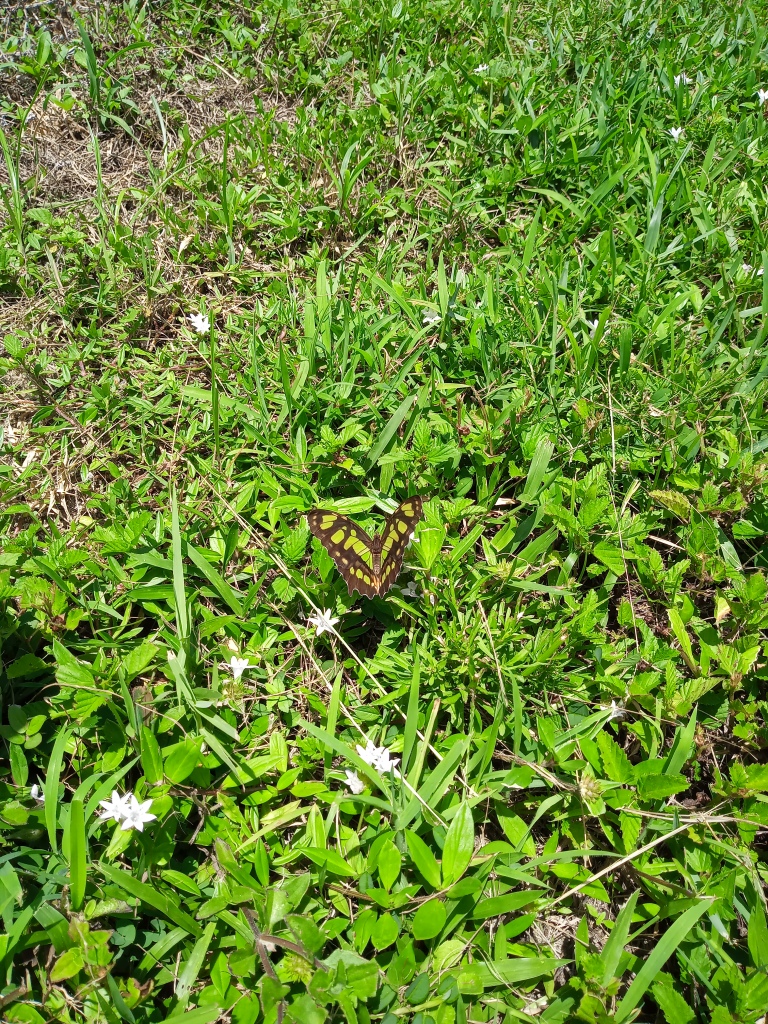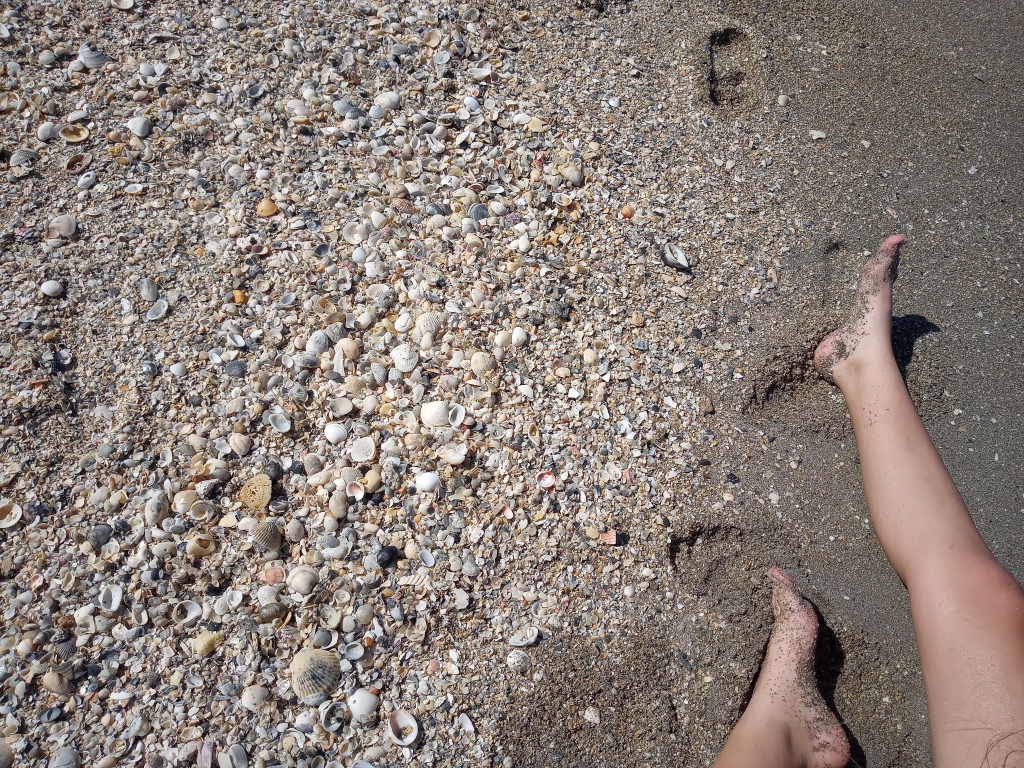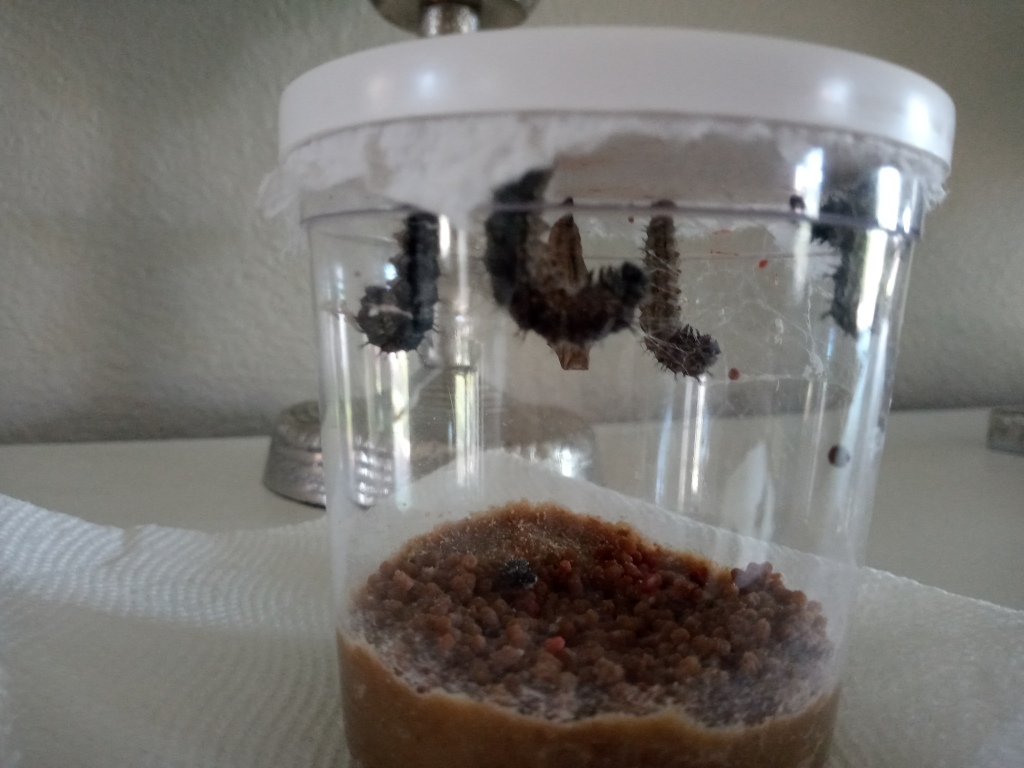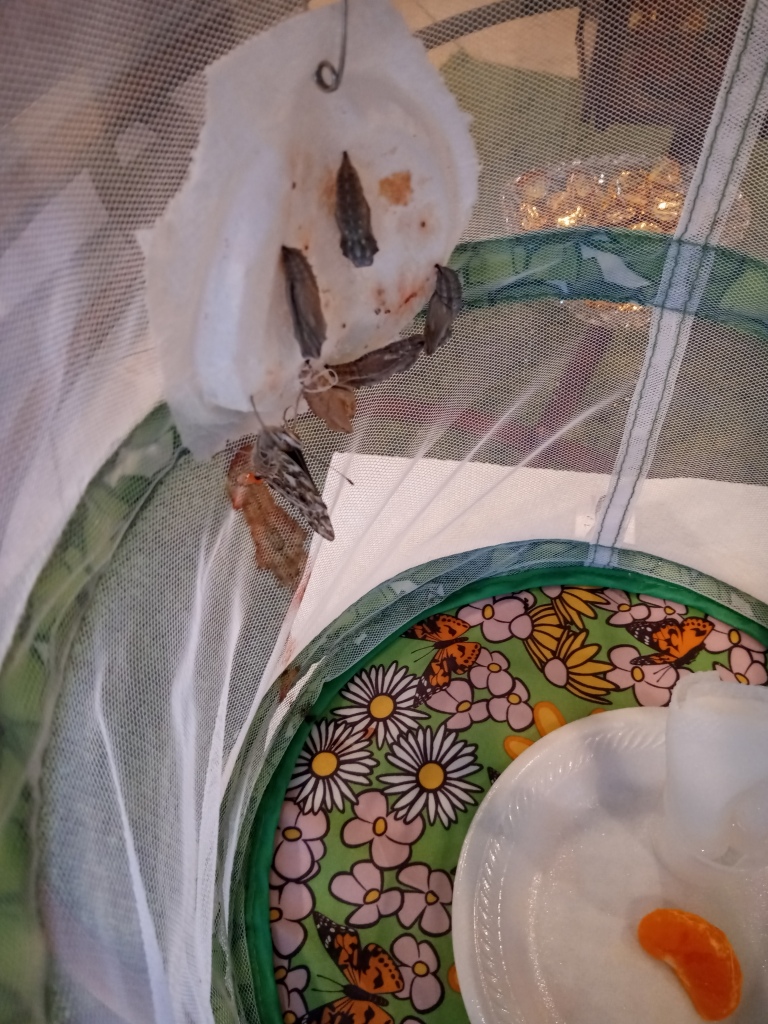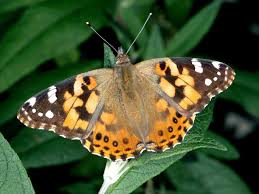
Somehow the lyrics to a pop song flashed in my head as I looked at the end table in my family room the other day:
“Am I out of my head?
Am I out of my mind?….
…Don’t think that I can explain it
What can I say, it’s complicated….”
-“Bad Things” by Camilla Cabello and Machine Gun Kelly
What started out as a simple way to pass the time during the “shelter at home” pandemic lock-down has turned crazy. Simply CRAZY! I looked at my daughter, “Teen Traveler,” while we were out on one of our day trips the other day and said with a laugh, “We are in WAY over our heads!” We traveled to a garden center an hour away to purchase some organic parsley to feed our caterpillars and laughed when we heard that they were fresh out of parsley because some woman bought TWENTY parsley plants shortly before our arrival. We laughed together the whole ride back to our house wondering WHO would buy TWENTY parsley plants.
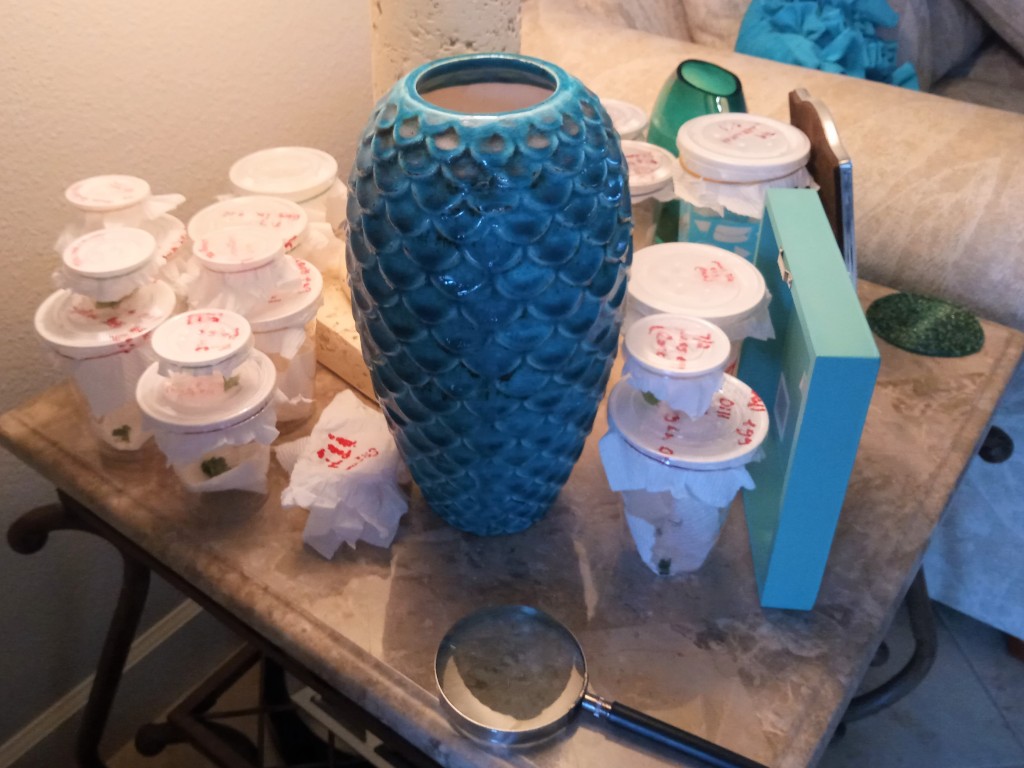
Fast forward to us taking inventory while feeding our caterpillars later in the day, and we decided that soon WE will need twenty parley plants for our black swallowtail butterflies that are currently in the caterpillar stage. We didn’t PLAN for that many caterpillars. Honestly. It seems that whenever we went for a walk, we took a cup with a lid “just in CASE” we found any butterfly eggs or caterpillars. Then, it didn’t help that when we went to the garden center we saw some caterpillars on some of the plants, and we asked if we could take one (or two or three…)home to raise. It didn’t help that when we purchased parsley from the garden center, most times we found a few eggs or a few tiny caterpillars on the plant AFTER we got home, either.
I am on the clean and tidy side, so if you EVER told me I would have many, I mean MANY, caterpillars in my house I would have said no. Then again, when I was pregnant many years ago if you told me I would have everything I could possibly need, including the proverbial kitchen sink, in my diaper bag, I would have thought you were crazy, too! I have decided having the caterpillar eggs and tiny caterpillars inside my house is the best place to keep them, though. I tell myself that it’s okay (while I inhale and exhale deeply, I might add) because they are in a cup with a napkin over the top, secured with an elastic. There is a lid to the cup over that which has tiny air holes poked on it for air circulation. I am so good with the idea of a double barrier. Nothing goes into or out of that cup without my knowledge. The eggs, caterpillars, and plants don’t smell bad I tell myself as I inhale and exhale deeply. Has to be done, as keeping the caterpillars and eggs in a cup outside in this Florida heat is much like a sauna, and they would die. I read on-line that some crazy butterfly person lets the butterfly caterpillars roam freely inside her house and often finds the chrysalises attached to her drapes! I laughed when I told my daughter and husband at least I am NOT that person. At least not yet and hoping not ever!

Once the caterpillars get a little larger (after the first and second “instar” or stage, maybe after a week) my daughter and I move them outside in butterfly cages. At least that WAS the plan until we realized we needed more cages than we thought. It was an exercise in creativity, as we had to come up with something quickly that would help, as we likely won’t have as many caterpillars growing at one time in the future. We came up with using some clear plastic plant saucers we found at Walmart with a lingerie bag (with TINY holes), which we supported upright with a host plant (MORE parsley) and dowels. This seems to be working well for the time being.


The caterpillars don’t always excite me, as they can be a little creepy to be honest. Okay, sometimes they can be VERY creepy, but watching a butterfly emerge from its chrysalis to release into our yard is magical. The black swallowtail butterfly caterpillar, however, is beautiful in my opinion.
Last week, I found a sulphur caterpillar on my walk around the neighborhood right next to my foot. I took him home, put him in a cage, and just this week he hatched into a beautiful sulphur butterfly. Amazing. Amazing AND humbling. Last night I saw another caterpillar on my walk but left it where it was instead of taking it home this time, thinking we have a lot going on right now. A LOT going on! I’ll be on the look out for another gulf frittilary caterpillar next time I go walking, though. Make no mistake; this is a bit of an obsession I think….at least for the time being…but I like to think of it as a “diversion” from the pandemic right now though.
It’s funny how everyone is different. Someone in the family suggested that we keep a notebook of our findings. Another person in the family suggested we simply keep a list of all the butterflies we raise but acknowledged that some people just like the whimsy of it all instead. I am sort of in the middle. I keep a note on the cup of caterpillars with the date the egg hatched, the date the caterpillar went into the chrysalis, and the date it emerged from the chrysalis simply so I can plan ahead for parsley……more and more parsley. In the meantime, though, I have decided that this Easter Tiger Swallowtail butterfly (the only one we have) might do well with a floral water tube in a mini habitat with a cutting of the wild black cherry we have growing in the yard. That also keeps him from climbing around at the bottom of his tray with his frass (excrement) between cage cleanings, too. This way, I don’t need to put the whole host plant into the habitat until he gets larger, and the food will last longer because the plant needs full sun but the caterpillars do better out of the sun but in a bright spot. Plants can get “leggy” under these conditions.
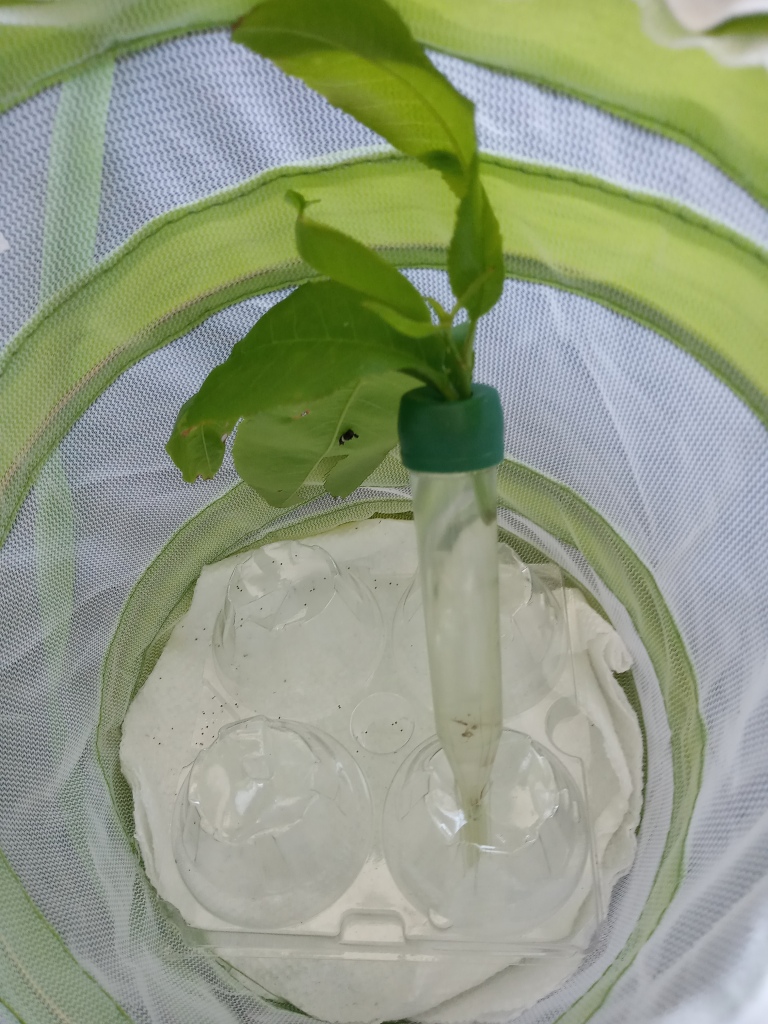
Life is good. Find something that excites you every day. Find a reason to get out of the house to go for a walk (with a little scavenger hunt to find butterfly eggs and caterpillars, maybe?). Seems as though we never leave the house without a little cup and a lid these days.
Carpe diem, friends………..



